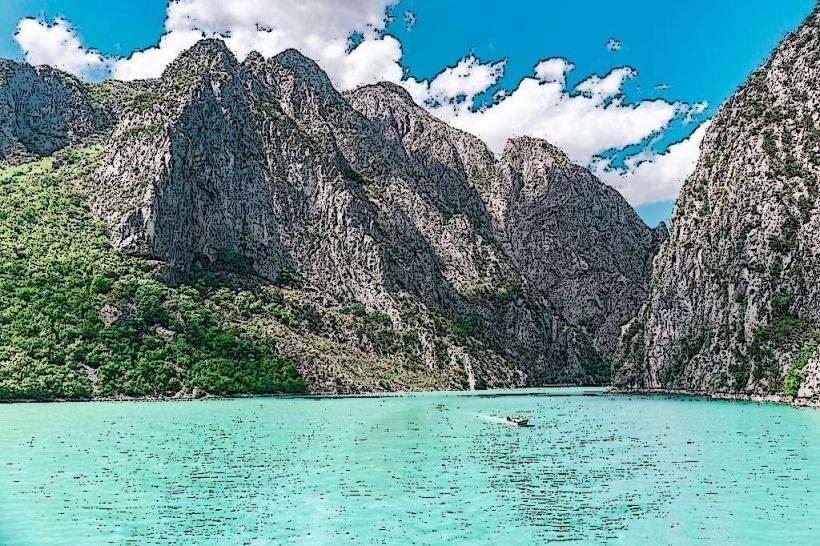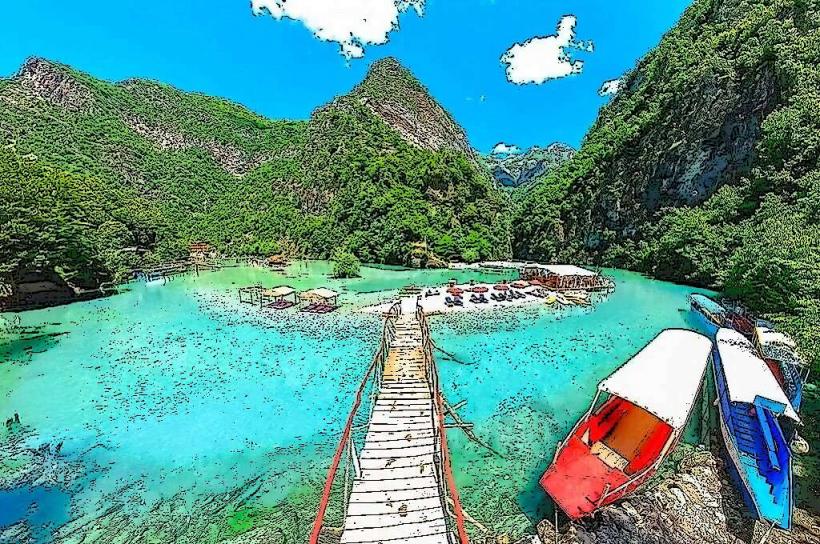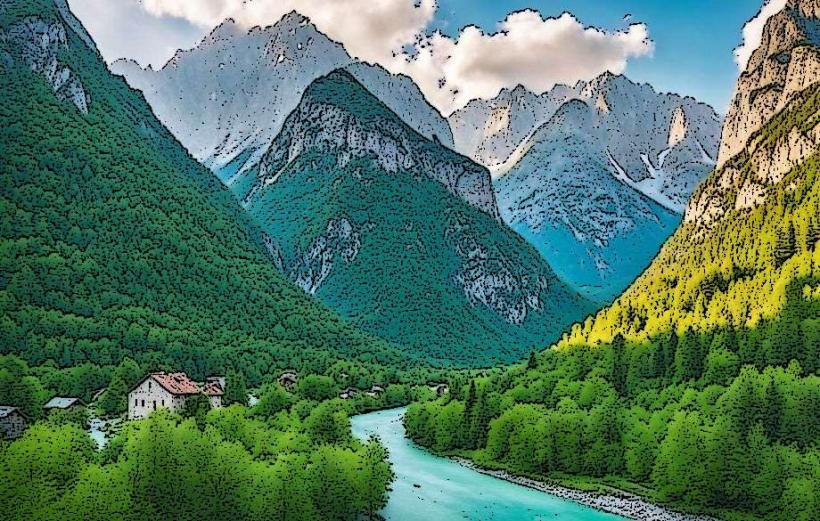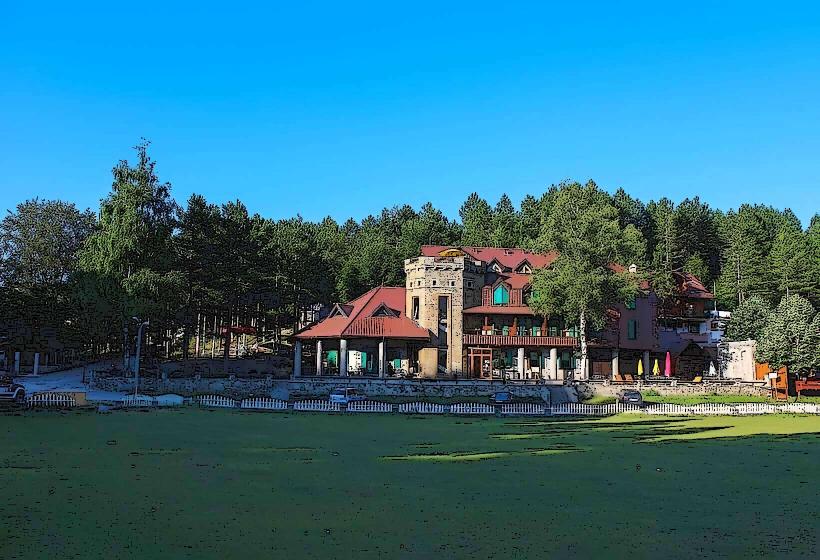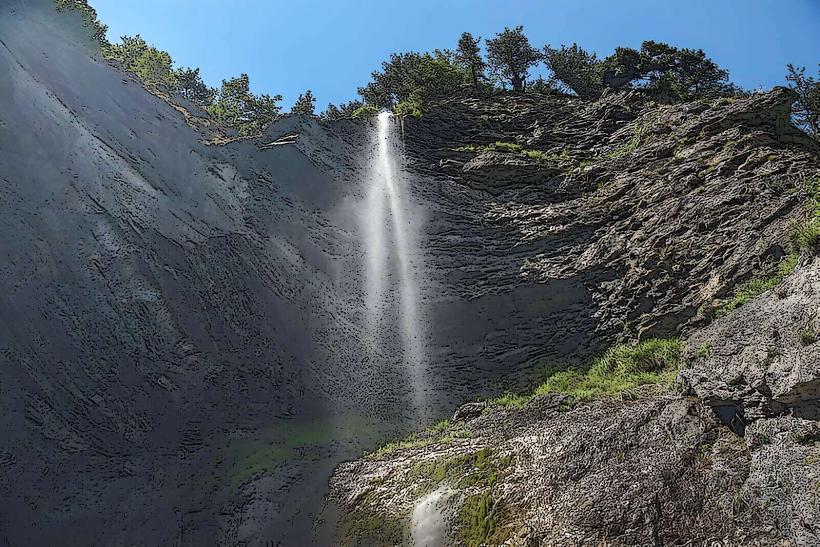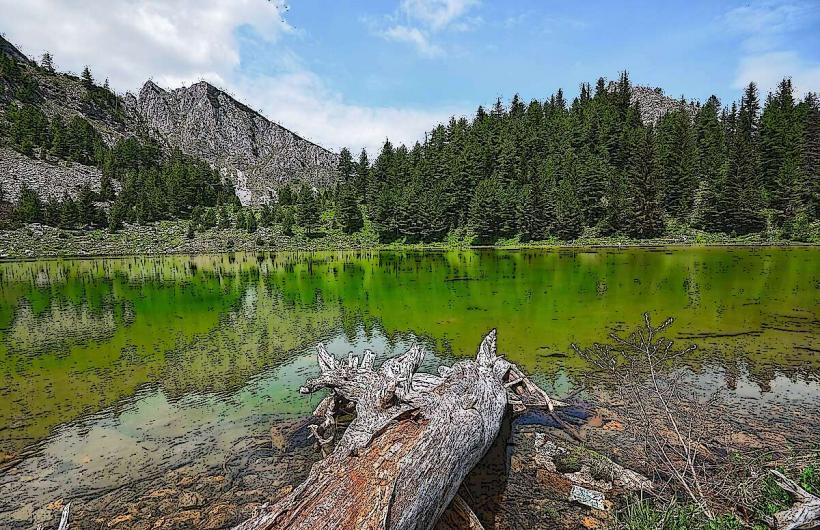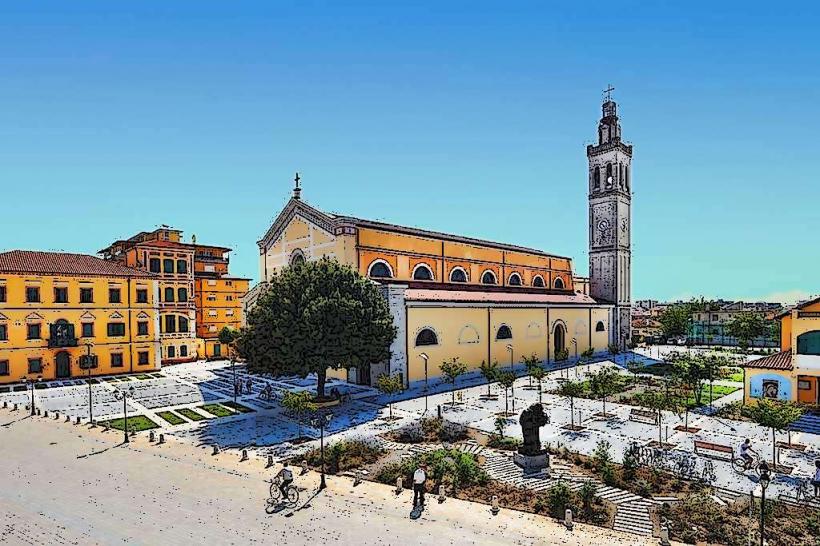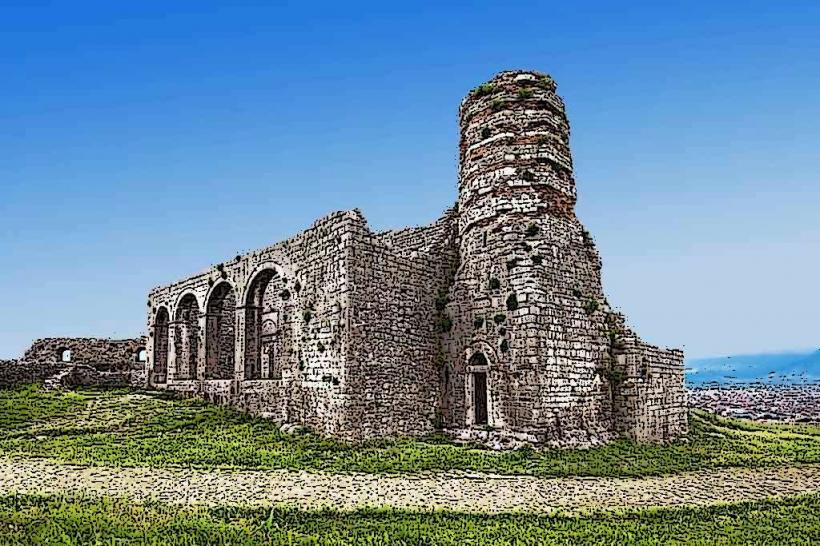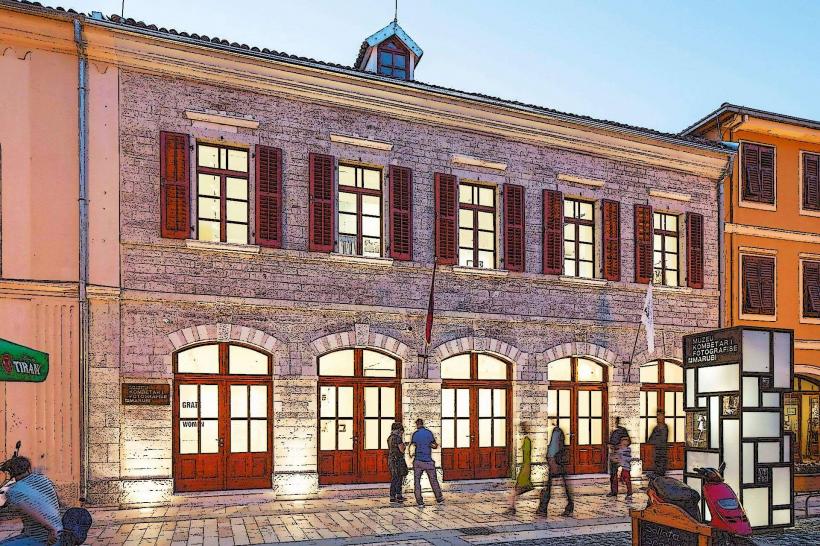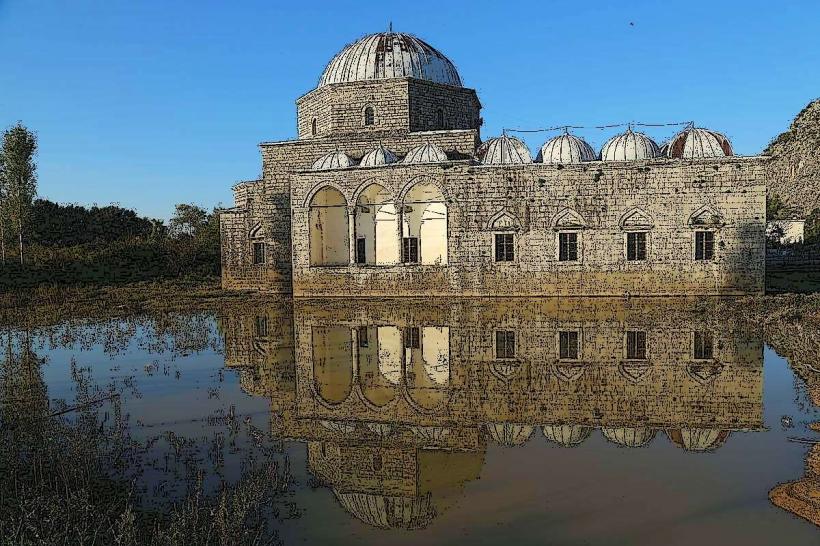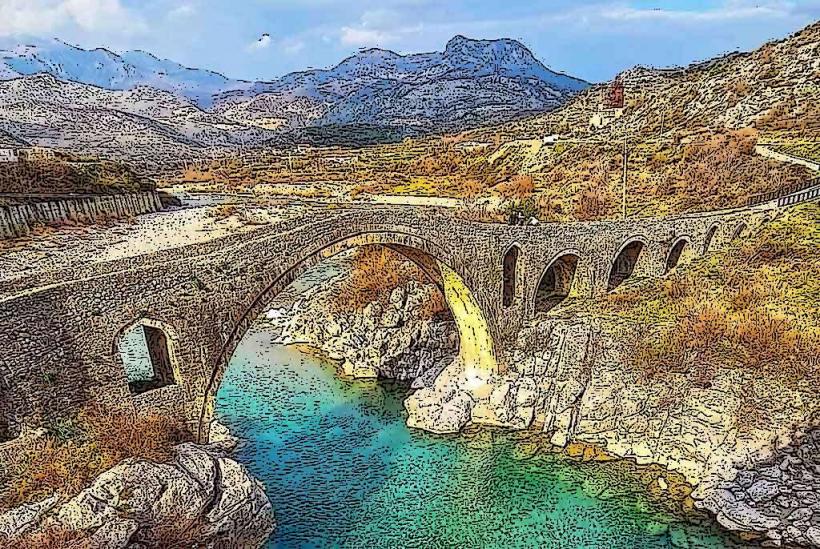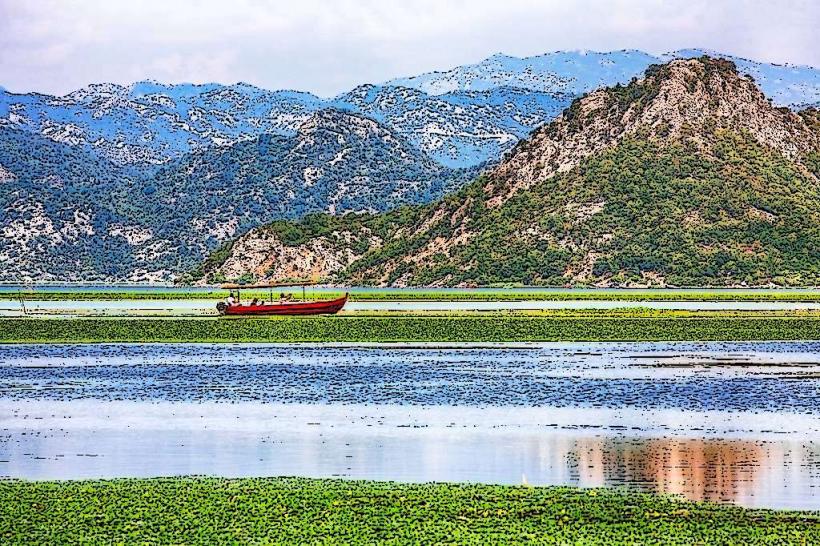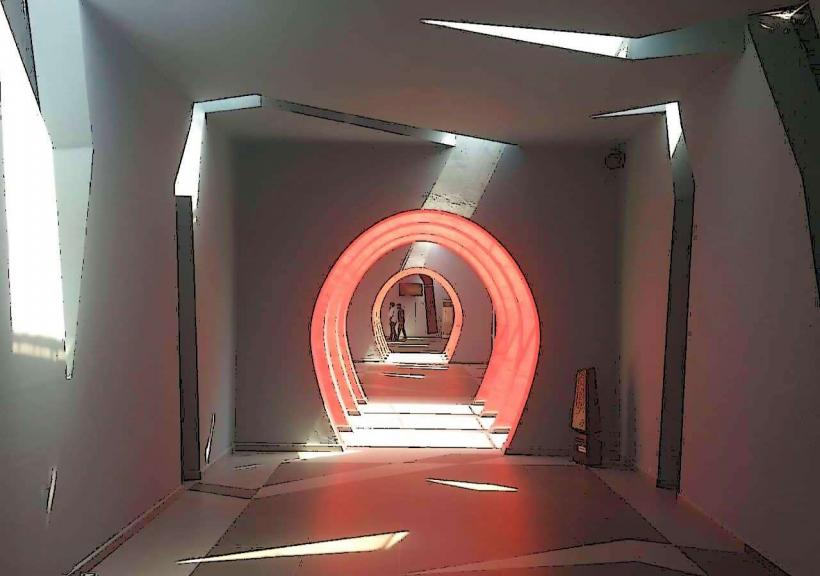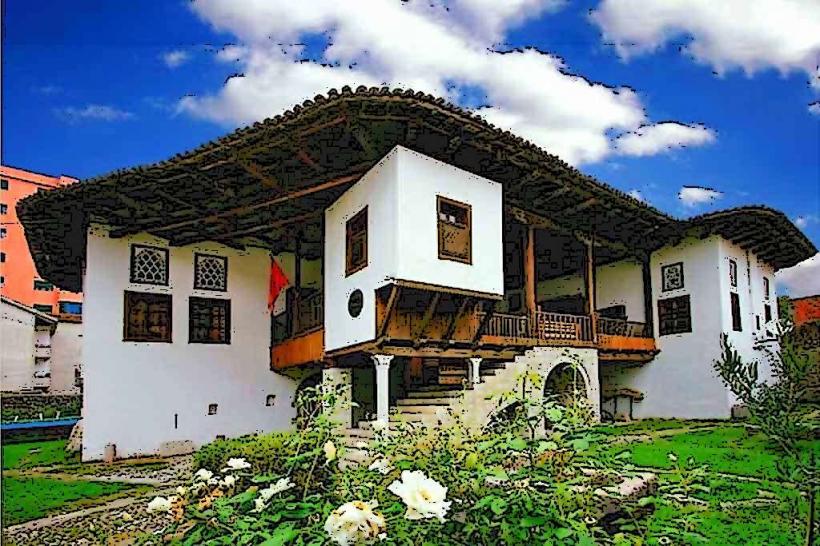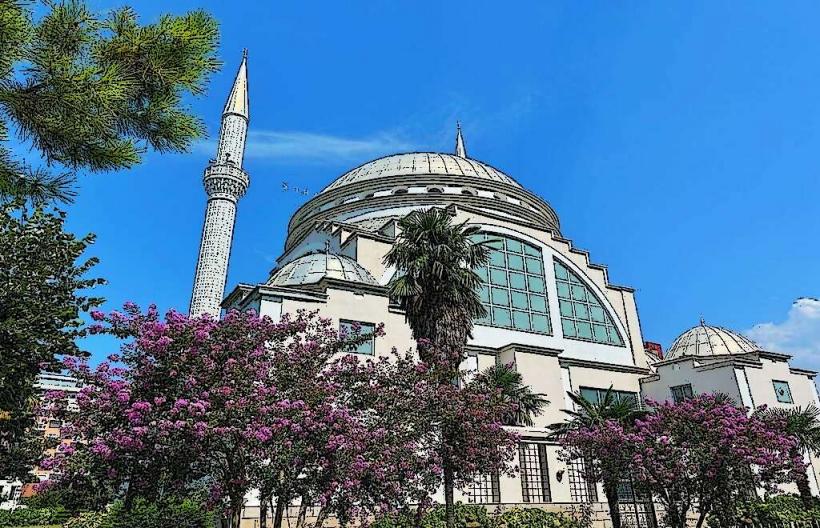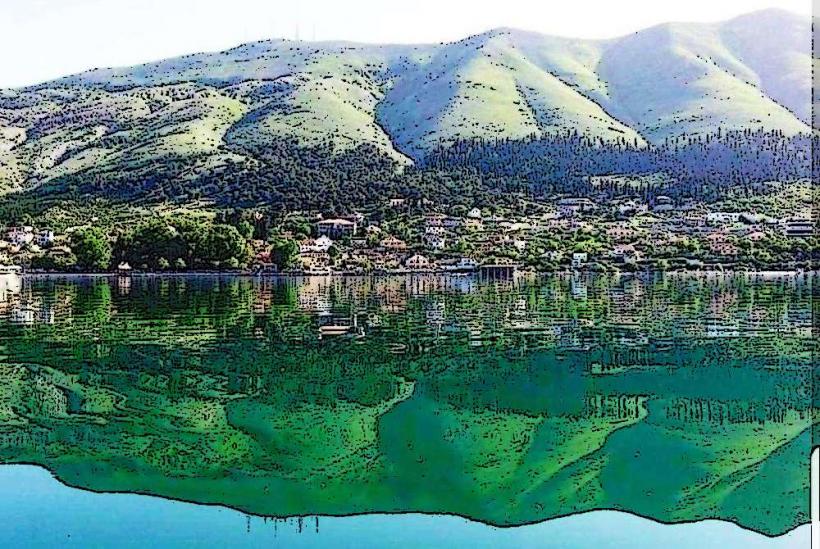Information
Landmark: Blue Eye of ThethCity: Shkoder
Country: Albania
Continent: Europe
The Blue Eye of Theth (Albanian: Syri i Kaltër i Thethit) is a stunning natural spring located in Thethi National Park in northern Albania. Known for its vibrant turquoise and deep blue hues, this spring is one of the most enchanting and popular attractions in the Albanian Alps, drawing visitors from around the world. Here is a detailed look at the Blue Eye of Theth:
Geographic Location:
- Region: The Blue Eye of Theth is situated in the Shala Valley, within the borders of Thethi National Park, part of the Shkodra District.
- Proximity:
- It lies near Theth Village, approximately 3 to 5 kilometers (1.8 to 3.1 miles) south of the village.
- It is easily accessible as part of a hike or trek from Theth or nearby villages such as Rragam.
- Elevation: Nestled at an altitude of about 900 meters (2,950 feet), the Blue Eye is surrounded by dense forests, rugged cliffs, and the dramatic peaks of the Accursed Mountains.
Features and Description:
- Appearance:
- The Blue Eye is a karst spring, where water emerges from underground limestone formations.
- The spring gets its name from its intense blue and turquoise colors, resembling an eye. The vibrant colors are due to the interplay of light, minerals, and the water’s exceptional clarity.
- The water in the center of the "eye" is deep blue, while the edges are a lighter turquoise, creating a mesmerizing contrast.
- Depth and Flow:
- The spring is 10-15 meters (33-50 feet) deep, with water bubbling up from underground.
- It feeds into the Shala River, contributing to its crystal-clear flow.
- Temperature:
- The water is icy cold, typically around 5–10°C (41–50°F), even during the summer, making it a refreshing but chilly spot for visitors.
Access and Hiking:
Hiking Trail:
- The Blue Eye is accessible via a well-marked hiking trail from Theth Village. The hike typically takes 1.5 to 2 hours, depending on pace and stops along the way.
- The trail winds through picturesque landscapes, including forests, rocky paths, and meadows, offering panoramic views of the surrounding mountains.
- It is considered a moderate hike, suitable for most visitors with basic fitness levels.
Alternative Routes:
- Some visitors include the Blue Eye as part of longer treks within Thethi National Park, such as routes connecting Thethi to Valbona or other nearby attractions like Rragami Waterfall.
Activities:
- Swimming:
- Brave visitors often take a quick dip in the icy waters of the Blue Eye. While the cold temperature is challenging, the experience is invigorating and memorable.
- Photography:
- The Blue Eye is a paradise for photographers, offering stunning visuals with its vibrant colors and pristine surroundings.
- Picnicking:
- The area around the Blue Eye provides a peaceful setting for picnics, with several shaded spots under the trees.
- Exploration:
- Visitors can explore the surrounding trails and admire the wild beauty of Thethi National Park.
Nearby Attractions:
- Thethi Waterfall (Grunas Waterfall): A 30-meter (98-foot) tall waterfall located a short distance from the Blue Eye, often visited on the same day.
- Theth Village: A charming alpine village with traditional stone houses, the famous Lock-in Tower (Kulla e Ngujimit), and the historic Theth Church.
- Valbona Valley: The Valbona-Theth hiking trail, one of Albania’s most iconic trekking routes, can be combined with a visit to the Blue Eye.
Best Time to Visit:
- Spring and Summer:
- The best time to visit the Blue Eye is from May to September, when the weather is mild, and the hiking trails are accessible.
- During this period, the spring is most vibrant, and the surrounding greenery is lush and inviting.
- Autumn:
- The fall season offers cooler temperatures and breathtaking foliage, creating a unique atmosphere around the Blue Eye.
- Winter:
- Due to snow and icy conditions, access to the Blue Eye can be challenging in winter, but it remains a magical sight for those prepared for the cold.
Conservation and Environmental Importance:
- Natural Heritage:
- The Blue Eye of Theth is part of the Thethi National Park, a protected area aimed at preserving the rich biodiversity and natural beauty of the Albanian Alps.
- Eco-Tourism:
- Efforts are being made to promote sustainable tourism in the area, ensuring the Blue Eye and its surroundings remain pristine for future generations.
- Visitors are encouraged to follow Leave No Trace principles, respecting the environment and minimizing their impact.
Tips for Visitors:
- Footwear: Wear comfortable hiking shoes, as the trail can be rocky and uneven.
- Waterproof Gear: Bring waterproof shoes or sandals if planning to wade near the spring.
- Warm Clothing: Even in summer, the cold water can be a shock, so pack a towel and warm clothing if you plan to swim.
- Snacks and Water: Bring sufficient supplies, as there are limited facilities near the Blue Eye.
- Local Guides: Hiring a local guide can enhance the experience by providing insights into the area’s history, geology, and flora and fauna.
Conclusion:
The Blue Eye of Theth is a natural masterpiece that showcases the unparalleled beauty of northern Albania. Its mesmerizing colors, tranquil setting, and connection to the dramatic landscapes of the Albanian Alps make it a must-visit destination for nature enthusiasts, hikers, and adventurers. Whether you come to hike, photograph, or simply soak in the serene atmosphere, the Blue Eye promises an unforgettable experience.

